Comparing the effect of a leaflet and a movie in preventing tick bites and Lyme disease in The Netherlands
- PMID: 27287731
- PMCID: PMC4902941
- DOI: 10.1186/s12889-016-3146-2
Comparing the effect of a leaflet and a movie in preventing tick bites and Lyme disease in The Netherlands
Abstract
Background: Lyme disease (LD) has become the most common vector borne illness in the Northern hemisphere. Prevention relies predominantly on fostering protective behaviors (e.g., avoiding tick areas, using protective clothing and repellent, and doing routine tick checks post-exposure). The objective of this study was to evaluate the effectiveness (in terms of knowledge, perceived severity and susceptibility, self-efficacy, response efficacy, intention, and behavior over time) and appreciation of a leaflet and a movie as tools for informing the public in the Netherlands about ticks and LD protective behaviors.
Methods: Participants (1,677 at t1 and 361 extra at t2) were members of a representative Internet panel (adults aged 18 years and above). A four group randomized controlled design was used to test the effect of an information leaflet and a movie (two intervention groups), compared to a control group and a follow-up only control group. Data were collected over two periods: July 15-29, 2013 (t1) and at follow-up 4 weeks later, August 16-31, 2013 (t2).
Results: Post-intervention results show all respondents in all groups possess good general basic knowledge of ticks and LD. Respondents in both the leaflet and movie groups knew more than respondents in the control group, and had greater awareness of best practices after a tick bite. Intention to perform protective behavior in future was stronger among respondents in the intervention groups. While respondents generally appreciated both the movie and the leaflet, they found the movie ran too long. Follow-up revealed no lasting positive effects from either the leaflet or the movie.
Conclusions: Our results suggest that both the movie and the leaflet are valued and effective intervention tools for improving knowledge about tick bites and strengthening self-efficacy and intentions to perform protective behavior against ticks and LD . Achieving lasting effects, however, calls for more action.
Keywords: Communication interventions; Educational interventions; Lyme disease; Ticks.
Figures
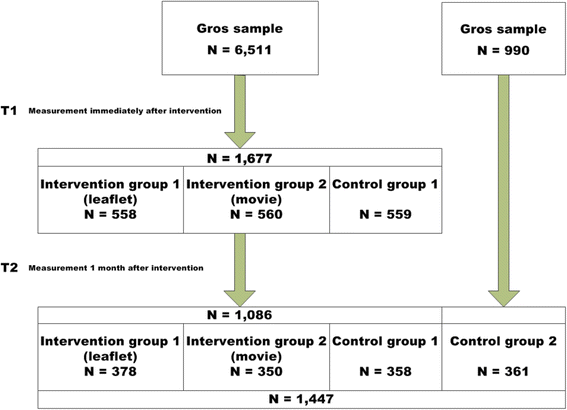
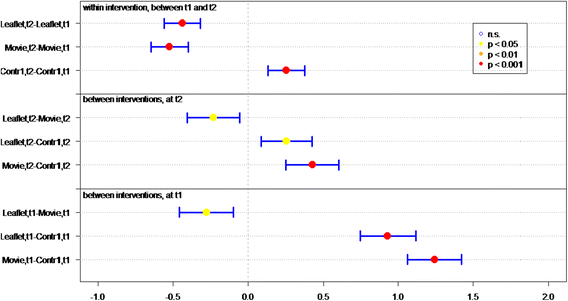

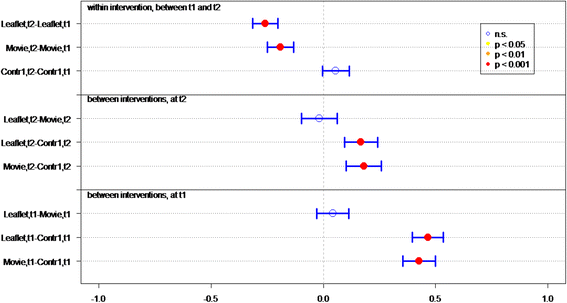
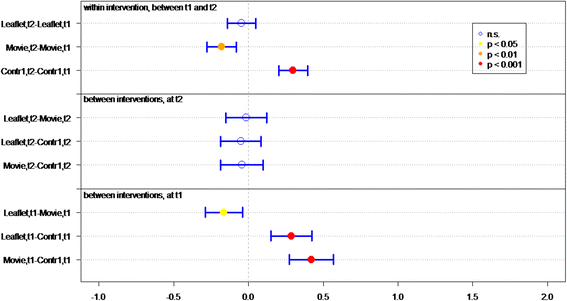
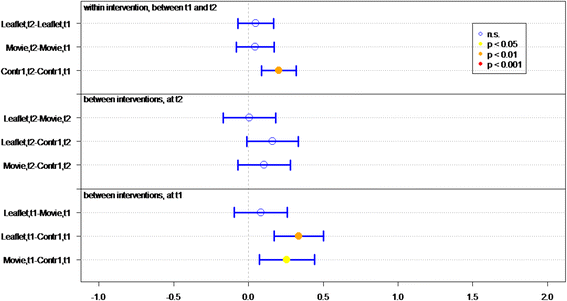
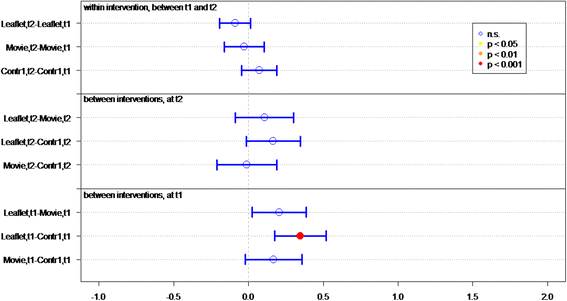
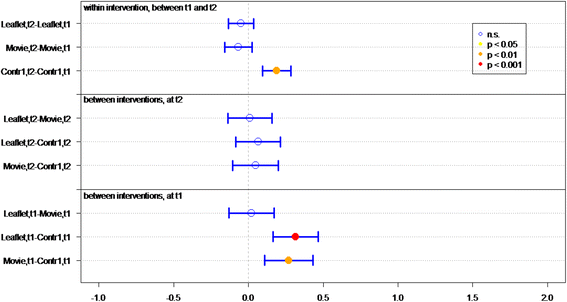
Similar articles
-
Education on tick bite and Lyme borreliosis prevention, aimed at schoolchildren in the Netherlands: comparing the effects of an online educational video game versus a leaflet or no intervention.BMC Public Health. 2016 Nov 16;16(1):1163. doi: 10.1186/s12889-016-3811-5. BMC Public Health. 2016. PMID: 27852247 Free PMC article.
-
Study on public perceptions and protective behaviors regarding Lyme disease among the general public in the Netherlands: implications for prevention programs.BMC Public Health. 2013 Mar 15;13:225. doi: 10.1186/1471-2458-13-225. BMC Public Health. 2013. PMID: 23497311 Free PMC article.
-
Exposure and preventive behaviours toward ticks and Lyme disease in Canada: Results from a first national survey.Ticks Tick Borne Dis. 2017 Jan;8(1):112-118. doi: 10.1016/j.ttbdis.2016.10.006. Epub 2016 Oct 13. Ticks Tick Borne Dis. 2017. PMID: 27771334
-
Methods to Prevent Tick Bites and Lyme Disease.Clin Lab Med. 2015 Dec;35(4):883-99. doi: 10.1016/j.cll.2015.07.003. Epub 2015 Aug 28. Clin Lab Med. 2015. PMID: 26593263 Review.
-
Personal protection measures to prevent tick bites in the United States: Knowledge gaps, challenges, and opportunities.Ticks Tick Borne Dis. 2022 Jul;13(4):101944. doi: 10.1016/j.ttbdis.2022.101944. Epub 2022 Mar 26. Ticks Tick Borne Dis. 2022. PMID: 35364518 Free PMC article. Review.
Cited by
-
Improving patients' experiences of diagnosis and treatment of vertebral fracture: co-production of knowledge sharing resources.BMC Musculoskelet Disord. 2024 Feb 21;25(1):165. doi: 10.1186/s12891-024-07281-9. BMC Musculoskelet Disord. 2024. PMID: 38383386 Free PMC article.
-
Prevention of tick bites: an evaluation of a smartphone app.BMC Infect Dis. 2017 Dec 4;17(1):744. doi: 10.1186/s12879-017-2836-4. BMC Infect Dis. 2017. PMID: 29202704 Free PMC article.
-
Interventions to prevent Lyme disease in humans: A systematic review.Prev Med Rep. 2018 Nov 13;13:16-22. doi: 10.1016/j.pmedr.2018.11.004. eCollection 2019 Mar. Prev Med Rep. 2018. PMID: 30456054 Free PMC article. Review.
-
Combining Citizen Science and Genomics to Investigate Tick, Pathogen, and Commensal Microbiome at Single-Tick Resolution.Front Genet. 2020 Jan 21;10:1322. doi: 10.3389/fgene.2019.01322. eCollection 2019. Front Genet. 2020. PMID: 32038704 Free PMC article.
-
Effect of educational brochure compared with video on disease-related knowledge in patients with juvenile idiopathic arthritis: A randomized controlled trial.Front Pediatr. 2022 Dec 9;10:1048949. doi: 10.3389/fped.2022.1048949. eCollection 2022. Front Pediatr. 2022. PMID: 36568417 Free PMC article.
References
-
- Smith R, Takkinen J, Editorial Team Lyme borreliosis: Europe wide coordinated surveillance and action needed? Eurosurveillance. 2006;25:2. - PubMed
-
- den Boon S, Schellekens JF, Schouls LM, Suijkerbuijk AW, et al. Verdubbeling van het aantal consulten voor tekenbeten en Lyme-borreliose in de huisartsenpraktijk in Nederland. Ned Tijdschr Geneeskd. 2004;148(14):665–70. - PubMed
Publication types
MeSH terms
LinkOut - more resources
Full Text Sources
Other Literature Sources
Medical
Research Materials
Miscellaneous

